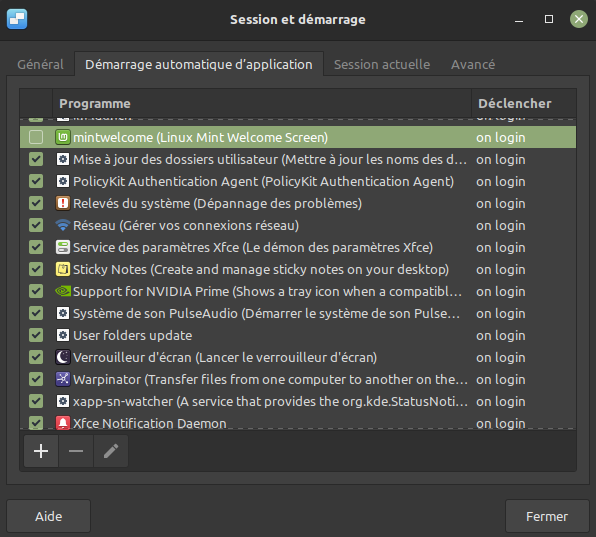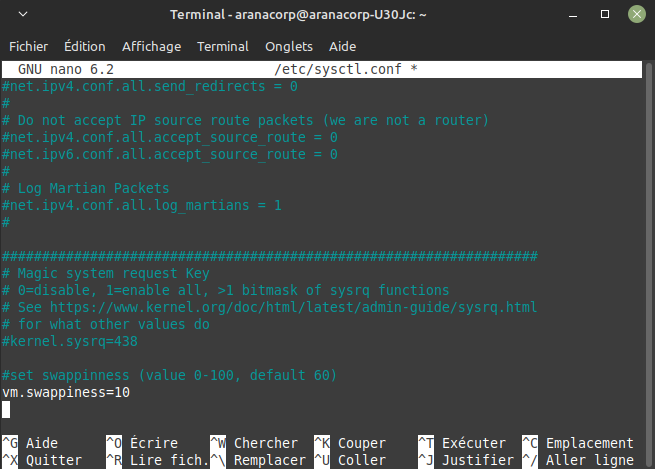There are a number of techniques for increasing the speed of a Linux computer. One of the main criteria for comfort in computing tools is execution speed, and in particular boot speed. This also applies to your computer, especially if it’s an old one on which you’ve installed Linux to give it a second lease of life.
This tutorial was created for Linux Mint 21, but can be adapted for other distributions.
Prerequisites :Installation of a Linux distribution on a computer
Reduce GRUB counter
If your distribution boots on GRUB, it may take up to 30 seconds to boot. Check the GRUB_TIMEOUT value
sudo nano /etc/default/grubSet this value to 5 or 0 (counter disabled)
Reduce the number of startup applications
In the application manager, search for “startup session” or “startup applications”, to obtain a list of applications that launch at each startup. You can simply uncheck those you don’t need.

Reduce swap
Check the default value defined in your distribution.
cat
The swappiness value can be set from 0 to 100 (default 60).
Tip: 1 Gb RAM; swappiness at 10
To set the swappiness value you must define its value in the sysctl.conf file and add vm.swappiness=10 at the end.
sudo nano /etc/sysctl.conf
Install Preload
Preload is a service that analyzes user behavior and commonly used software. It runs in the background and preloads your favorite applications. This makes them launch faster.
sudo apt install preloadUse a lightweight desktop environment
Installing a lightweight Linux distribution or desktop
This is already used by the Linux Mint Xfce distribution, and there are others for Ubuntu.
Avoid overheating the computer
A CPU that overheats will take longer to perform tasks such as opening software. You can install the TLP software, which enables you to obtain a power-saving mode.
sudo apt install tlp tlp-rdwoptional: Install CPUFREQ to observe computing frequency
sudo apt install indicator-cpufreq



